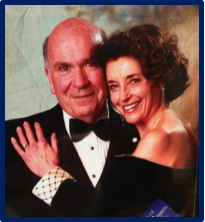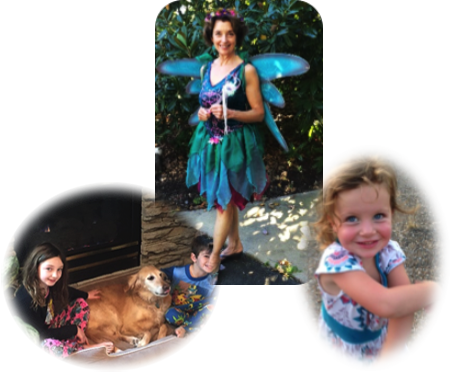TSI’S INTERVIEW WITH LINDA
TSI: Thank you for agreeing to be the first TSM Trainer that we’re interviewing from the US. It’s clear to anyone who knows you and anyone who has read your website that you’ve had a very broad background. How did you choose to focus your energy on psychodrama?
Linda: I have always been interested in mindbodyheartspirit connection and well-being. The arts, dance and drama, especially theatre, and my transpersonal strengths helped me through a difficult childhood and adolescence. In graduate school, my Masters in Education Concentration was split between philosophy and theater and my thesis was “Education as a Dramatic Process.”
At this point, I had not heard of psychodrama, but had a fairly extensive background in theater as an amateur actress and director. I was also working simultaneously as the Outreach Coordinator for an eating disorders’ treatment center where I led psychoeducational and support groups. So, when a flyer came across my desk—Introduction to Psychodrama—I thought, “How exciting! Psychology and theatre.” I went to the workshop, was hooked, and immediately signed up for an ongoing psychodrama training group with Dr. JoAnn Thacker, TEP who became my primary CP trainer.
TSI: And what brought you to Kate and TSM?
Linda: Actually, another flyer. I saw one about a workshop led by Kate on the Containing Double. The team included Karen Carnabucci (who would later become my co-author) and Kathy Metcalf (with whom I co-led some eating disorder workshops). It was specifically the model of safety for trauma survivors—especially helping them remain present while telling their stories and then while enacting them with developmental repair—that drew me to TSM. And Kate’s teaching style made it all so clear even though initially the model appeared complex (matching the TSIRA with what was happening onstage in a drama). She taught it as something I could learn and practice.
TSI: Can you tell us something about your choices to become a TSM trainer?
Linda: After I received my CP and TSM Team Leader Certifications close together in 2005, I then I became a PAT. In the meantime, I had begun a collaboration with Nancy Alexander LCSW-C, a psychotherapist in Columbia, MD, who has decades of experience working with trauma survivors. After suggesting that she refer some of her clients to TSM workshops, she, TSM-trained Patti Desert, and I developed a series of TSM workshops based upon themes relating to the 5 seasons as described in Chinese medicine.
When the series was completed, Nancy and I began another kind of collaboration, which is described in the “Trauma and Teamwork” article published in the Spring 2014 issue of the Psychodrama Journal. A series of private dramas for several of Nancy’s clients required skilled auxiliaries familiar with TSM, and we agreed that our protagonists would require the extra safety that TSM provides. Trainees Connie Newton and Lisa Miller, along with Nancy, made a skilled and compassionate team eager to learn more TSM skills and theory to enhance their own work.
So this was the actual venue that provided me an opportunity to step into the TSM Trainer role. Each drama not only addressed the contract made with the protagonist, but contained a theme or skill that was the stated goal for the team’s learning. I simultaneously held the Team Leader and Trainer roles and this process continued on a regular basis for 5 years.
TSI: In psychodrama you have several avenues that you specialize in. Can you please tell us a little something about each?
Linda: As with many practitioners, my interest in each of the areas listed below evolved from my personal experience. In my own journey of exploration, recovery, healing and transformation, I also developed a passion for sharing what I had discovered in hopes that it may help others. For example, yoga, body awareness, mindfulness, and Reiki are just a few of the things I have been able to weave into my psychodramatic work. However, overall, spirituality is what grounds me and my work through the many avenues.
I’ll just say a few words about these areas of specialty I’ve been immersed in:
Eating disorders – I love unravelling the complex connection between food, feelings, and relationships. I named these the “3 faces of eating disorders,” which are described in the book with Karen Carnabucci.
Trauma – A personal history of trauma, along with body-based experience in dance and yoga and my resonance with theater, found a home in psychodrama. I discovered, personally and professionally, the power of psychodrama, specifically TSM, to heal trauma. Training in dance and yoga helped me co-develop the body double role (BD).
Wellness & Self-care – Oftentimes caretakers can give beyond their capabilities, so attunement to one’s needs is essential for the development of the “self-caretaker” role, while self-respect and compassion are the cornerstones. I’m thinking of a drama I directed on this theme that explains this. The protagonist could not reach her ‘wished-for role’ of self-caretaker since she was overwhelmed with all the people needing her and dragging her down. As the director, I knew she had to get a picture of what was happening and also begin to have compassion for herself. I had her double stand in for her and then brought the protagonist into the mirror position. From that place she could see and begin to feel compassion for herself. Consulting with her Observing Ego, she got clarity on what needed to be done. So, with the double’s help, she was able clearly and compassionately to put her life on stage in order and to connect with her wished-for role. This gave her the self-respect to make some major changes in her personal and professional life to take care of herself.
Spirituality: TSM’s incorporation of transpersonal strengths was a major draw for me. I was raised Catholic and, while not considered a practicing Catholic, I am extremely grateful for what I learned and experienced—the sense of a Divine Presence in everyday life. In life, as well as in dramas, I’ve seen that transpersonal strengths and love are essential to transformation. I use Reiki and see this as divine universal energy being sent out on energetic wings. It is non-discriminatory; it is the energy of universal love. And, there are no contraindications for its use.
TSI: In teaching and training others in both psychodrama and TSM, what do you try to convey as THE essential feature. I.e., what would be a ‘word of wisdom’ to a new trainee?
Linda: Clearly and simply safety — of all concerned. I agree with Zerka that Doubling is the heart of psychodrama. In my view it is the most essential skill. Attunement informs all decisions and the ability of the director to attune provides a safe foundation for the process.
One of the interventions I’ve found particularly helpful is something I call the “triple double,” which sandwiches the classical deepening psychodramatic double between the TSM Body Double and TSM Containing Double. This allows the protagonist to stay in the body (BD), identify, feel, and accurately label the feelings (classical double), and remain in the ‘window of tolerance’ of the CD. The article that Nancy and I co-authored gives a case study to illustrate this.
TSI: Your professional life has been rich and rewarding and you’re known as a ‘trainer of substance.’ Is there something or someone in particular that has helped you focus and continue to achieve your goals for you and your trainees?
Linda: Well, there are a lot of people who have helped and continue to help me attain my goal of becoming a top-notch trainer. Colleagues such as my co-leader Cathy Nugent; my collaborator Nancy Alexander (we’re currently doing webinars together); co-author Karen Carnabucci; my supportive colleague and friend Kathy Amsden; Karen Drucker; Patti Desert; Kamala Burden; Steve Kopp and the members of MAC; Steven Durost, and, of course, Zerka. These people have clearly inspired me.
And, I have been blessed with brilliant trainers, each who has a repertoire of skills and talents that I have learned from and who has been a role model for me. I’d like to list them here, if I may.
Primary CP Trainer: JoAnn Thacker, who is so highly skilled in classical psychodrama and is creative and compassionate and encouraging.
Secondary CP Trainer: Kate Hudgins. Kate is brilliant in teaching theory and its application to sensitively-nuanced work with trauma survivors. She also guided me masterfully in preparation for the CP written exam.
Primary TEP Trainer: Joe Kenna, who is the essence of spontaneity, creativity and compassion and the embodiment of inner, outer, and upper strengths.
Secondary TEP Trainer: Mario Cossa. Not only was Mario my Secondary TEP Trainer, but also one of my TSM Trainers. His brilliant capacity to combine containment, creativity and clarity showed me the best in combining classical psychodrama and TSM. In addition he prepared me for the written TEP exam.
I hold these role models close in mind and heart when in my Trainer role. They inspire me to show up, be gentle, learn, teach, and be love.
TSI: That’s beautiful, Linda, thank you. You mentioned the webinars that you’re doing with Nancy Alexander. Please tell us something about these and other current workshops and trainings you’re doing. Are they open-ended? Do they require prerequisites?
Linda: Nancy is a published author and created a recording studio in her home for audio-recording her books. She approached me with the idea of developing webinars to introduce psychodrama. We are clearly aware that psychodrama is not generally taught in Social Work or Counseling programs, and is often misunderstood and/or misrepresented. We had collaborated in presentations for Maryland Social Work Conferences, which were well-received. But we decided we wanted to reach a wider audience to show them the healing power of psychodrama, its many applications, and, hopefully, to inspire them to find a training group and work toward certification.
The webinars start with a demonstration drama with a Team of TSM TAE’s: Connie Newton, Lisa Miller, Will Halm, as well as Nancy Alexander. We then create teaching modules on various topics or techniques, which we can illustrate with clips from the drama—e.g., doubling, mirroring, role reversal, etc. In the near future there will also be interactive webinar workshops where viewers/listeners can call in with questions. Our hope is to bring a new generation of psychodramatists into the field.
I also currently co-lead a psychodrama training group with Cathy Nugent, LCPC, TEP for intermediate and advanced psychodrama trainees. This is held at Cathy’s location in Laurel, MD. Cathy leads an additional training group for students with 150 hours or less of psychodrama training assisted by Connie Newton.
TSI: Can you tell us what’s coming up in the near future for you?
Linda: In addition to our proposed future webinars, I’m excited to offer TSM Safety Basics, a one-day workshop with Cathy Nugent and Connie Newton. Cathy is hosting this in the same space she so generously provides for the ongoing training groups I mentioned above. This is in her home in Laurel, MD, which is conveniently located between Washington, DC and Baltimore and close to Columbia, MD. Anyone who is interested can contact Cathy at cathynugent@verizon.net. The basics we’re teaching are the TSM safety structures like the Observing Ego (OE) role, Circle of Strengths, art projects, etc.
As many people know there is a special psychodrama journal issue in the works that is dedicated to Zerka—sometime either later this year but likely next year. I will have an article in that entitled “Zerka’s Last Chapter.” It’s an honor to have been asked to write that and I do so with deep reverence.
The next issue of the ASGPP journal is publishing a poem I wrote from the Body Double Role (BD) following a TSM drama of “The Sleeping Awakening Child.” I had been the BD and was so moved by the experience that I wrote the poem.
I’ve been a regular presenter at ASGPP, MAC, and other conferences such as Renfrew, USBPA (US Body Psychotherapy Assn.) conference, BPA, etc., and I hope to continue to do this also.
TSI: I understand that in addition to all this professional achievement, you’ve achieved another milestone that deserves some recognition. You’ve been married to the same man for 47 years and you have a wonderful family, including grandchildren. Can you share a little something about this side of your life?
 Linda: My husband, Joe, and I will celebrate our 47th anniversary in July!
Linda: My husband, Joe, and I will celebrate our 47th anniversary in July!
Joe is a County Health Officer and EMS Medical Director after retiring from a career as an orthopedic surgeon. He is also a model train craftsman and gardener extraordinaire.
This photo (left) shows orchids grown by my husband Joe. One was given to me by Zerka, saying it had died in her room and asking if Joe could revive it – and he did!
Joe and me at the Hospice Gala that we attend every year.
We have two children—Joseph John, an orthopedic surgeon, who followed in his dad’s footsteps and Alyson, an acupuncturist and Yogi (co-owner of OUI POWER YOGA in Lafayette, Louisiana). We are blessed with three beautiful, spontaneous and creative grandchildren. Sophia is 8, Benjamin will be 5 in June, and Ella is 4. It is they who provide me with my most treasured role, “playful, loving grandmother.”
Joe and I also have our own “furry auxiliary,” a sweet Golden Retriever named Allie who was retired from the Virginia State Police Bomb Squad. She was great at finding bombs but more interested in people—the very best with sociometric connections.

Linda in her favorite psychodramatic role—Fairy Grandmother—surrounded by Sophia, 8, Allie the furry auxiliary, Benjamin, almost 5, and Ella, 4.
I have to say that I am truly blessed and extremely grateful. My life is filled with generally good health, loving relationships, caring friends and colleagues, meaningful work, and a deep and abiding faith—in both The Divine and in the resiliency of the human spirit. I aim to live my life guided by the words of the poet Rumi, “…a single speck of dust that danced with love.”
TSI: And thank you, Linda, for sharing some of your life with us.
PUBLISHED WORKS
Alexander, N. & Ciotola, L. (2014). Teamwork and trauma recovery. The Journal of Psychodrama, Sociometry and Group Psychotherapy. Vol 62 (1), 91-104.
Burden, K.B. and Ciotola, L. (2002) The Body Double: An Advanced Clinical Action Intervention Module in the Therapeutic Spiral Model to Treat Trauma. Available at www.vsjournals.de /pdf/body_offener_beitrag_03 2007.pdf, accessed on 15 September 2012.
Carnabucci, K. & Ciotola, L. (2013). Healing eating disorders with psychodrama and other action methods: Beyond the silence and the fury. London: Jessica Kingsley Publishers.
Ciotola, L. (1998). Eating Disorders. San Diego, CA: Greenhaven Press.
Ciotola, L. (2006). The Body Dialogue: An action intervention to build body empathy. Journal of Group Psychotherapy, Psychodrama and Sociometry. 59 (1), 35-38. Washington, DC: Heldref Publications.
Ciotola, L. (2008). The Body Dialogue (Dialog mit dem Korper). Zeitschrift fur Psychodrama und Suziomtrie. Korper/ZPS. 1/2008, pp. 124-127.
Ciotola, L. (2009). “Giving voice to the unspoken: Triple Double.” Handout for Maryland National Association of Social Workers Conference. Co-presentation with Nancy Alexander. Baltimore, MD.
Ciotola, L. and Kenna, J. (2004). Using Furry Auxiliaries in Individual Therapy. Workshop Handout for Mid-Atlantic Chapter of the American Society of Group Psychotherapy and Psychodrama, Silver Spring, MD.
Hudgins, M.K. and Ciotola, L. (2003). The Body Double: An experiential intervention for eating disorders. IADEP Connections Newsletter, August.
